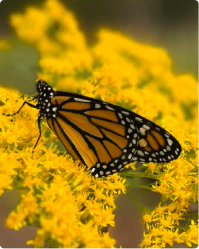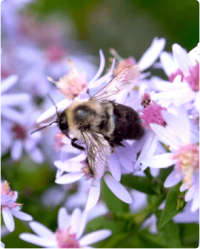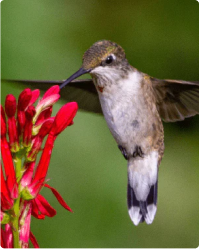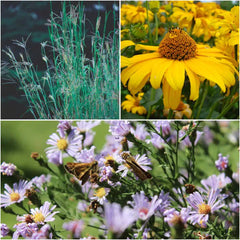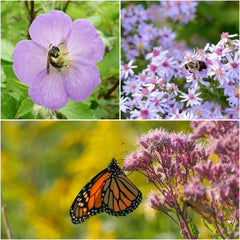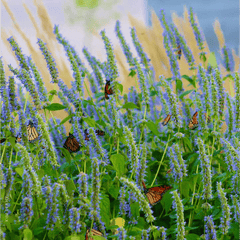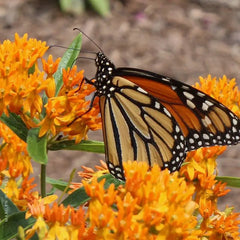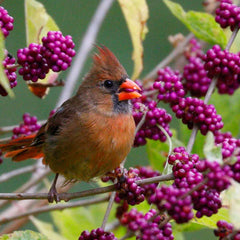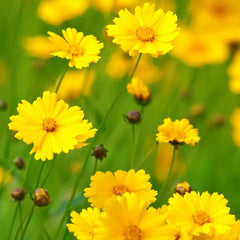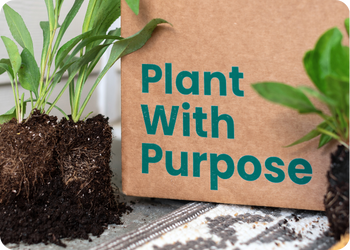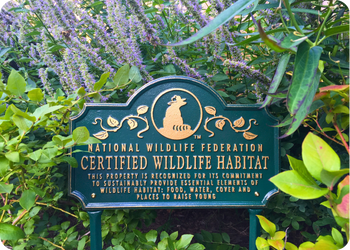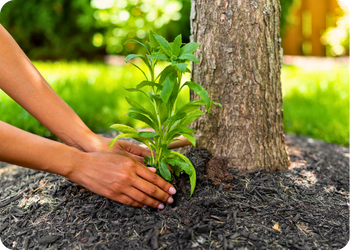Tips for Kids Garden Month

Tips for Getting More from Kids Garden Month

Every April is Kids Garden Month, and the hashtag #KidsGardenMonth begins to trend. Teaching kids about gardening is only a good thing, and it comes with a wide range of benefits that are hard to overlook. So let's take a closer look at why gardening is important for children to get involved with, the benefits, and some gardening ideas for kids to get them more interested in developing those little green thumbs.
Why is gardening for kids important?
It’s been well-researched in multiple studies, but being outside, enjoying the fresh air and physical activity, is generally great for our mental and physical health — and children are no different.
Gardening offers that immediate benefit, but that’s not all. Some of the lessons kids learn through gardening with children can be invaluable.
Sensory development
Think of how many senses are engaged in even a simple garden. From the soil’s texture to the smell of the plants and the sounds of local wildlife, a lot is going on, and there’s a lot to experience. So it can only be good news for their sensory development to have children helping in the garden, as they develop vital hand-eye coordination through pruning or trimming.
Then there's the fact that by engaging in gardening projects for kids, they also get physical exercise. All that digging, watering, and lifting is great for their physical development.
Better eating habits
If you let children get involved with growing vegetables, they will develop a much keener interest in eating them. A growing number of studies show that children encouraged to grow fruit and vegetables in the garden are twice as likely to eat five servings of fruit and veg — and enjoy it more too.
Most parents are well aware of how hard it can be to encourage children to eat a healthier balance of food. However, when those children don’t just see how much goes into growing food but also get involved in it, they also develop a sense of achievement. They’ve helped, they’ve put the work in, and now they can enjoy the literal fruits of their labor. Teaching kids about gardening can change the way they look at the food on the table.
Patience and responsibility
Children will only get from gardening what they put into it. So one of the most valuable lessons they'll learn is to be more patient. It takes time to grow plants and food, and different types require different levels of maintenance. Without the right amount of watering, for example, their hard work will go to waste. So they’ll also learn about plants and sunlight, native plants requiring less water, and other important lessons.
Besides patience, teaching kids about gardening helps them feel a sense of engagement. By looking after what they're growing, they’ll have no choice but to stay involved, often for long periods. And the sense of satisfaction when their first flower blooms or when they see their first vegetable sprout will be overwhelming.
Appreciation of nature
More than ever, the younger generation is taking a more enlightened view of the world around us. They're more environmentally responsible, and gardening can show them that a more considered approach to what and how they plant can have an immediate impact on the biodiversity of their outdoor space.
For example, teaching about the importance of native plants, and encouraging them to use a native plant finder to narrow down their planting options, means they’ll see firsthand how quickly the right approach to a pollinator garden can affect local wildlife. They’ll see more butterflies, fireflies, and other pollinators. They’ll also learn that they’re helping other species while using less water.
Education
When you spend time gardening with kids, they also pick up a wide-ranging basic education. They’ll learn about the seasons, our food web, and local wildlife.
Even something as simple as counting seeds or describing the vast array of colors on the leaves of their plants will be extremely beneficial when they head to the classroom. These are all lessons they’ll carry with them for the rest of their lives, so it’s hard to overestimate the sheer educational value of spending even a few hours gardening with children.
The question is, how do you get kids interested in the garden in the first place?
Clever ways to get kids involved with gardening
Tell the kids they’re going to do some gardening, and there’s a good chance you’ll be met with unhappy groans and the beginning of endless complaints. However, there are some effortless ways to start getting children of all ages more interested in the garden. Here are some tips to get your imagination started and your kids in the garden.
Children's garden supplies
Let the little ones have their own gardening tools, and they’ll suddenly be more interested in what they can do with them. Gardening tools designed for smaller hands also make it much easier for the kids to get involved — they don’t have to struggle with heavy shovels or difficult-to-control rakes. If you can personalize those tools, all the better.
There are many places to buy children’s gardening tools, and you don’t need to get every single tool they’ll ever need. Start with:
- A trowel
- A shovel
- A hand rake
- A watering can.
You don’t need many tools to get started with a habitat or wildlife garden. Don’t forget to stock up on sunblock if you live somewhere hot! You might also want to consider some knee pads, gardening gloves, and even a utility belt or apron with a front pocket.
Give them a space
Part of the approach you should be taking toward gardening with children is to let them make choices. That begins with allocating them their own space in the garden where they can do as they please. Having that personal space is great for their confidence. However, start small. If you give them too much of a plot, they might get a bit overwhelmed, and that’s the first step to losing interest.
Place a border around their plot so they know exactly what they have. Don’t forget you can always help, so on day one, show them how to get the soil ready for planting. And, of course, let them get dirty! That’s half the fun!

Plant autonomy
This is where many adults make mistakes. They tell their children what they should be growing. The key here is to talk through what your child wants from their garden and then help them work out for themselves what’s best to plant to achieve their goals.
Do they want vegetables they can eat? Do they want to attract monarch butterflies? Talk through each option, and research their choices together. Some plants are harder to grow than others, and you don’t want them to struggle too much with a plant that even you'd find hard to keep healthy.
Planting with creativity
If your first thought about planting seeds or young plants is lovely, uniform rows, think again. Try to avoid that kind of thinking. Kids in the garden will likely want something a little more random and spontaneous.
Section off different parts of their plot, and let your young gardener work out what should be planted in each section. Think about adding different levels, using plant pots, beds, and even bird feeders to create a more dynamic and exciting space. And when it comes to the actual planting, do your research together so your child learns the right conditions for their plants. Remember, native plants need less maintenance and watering over time!
Don’t be boring
If their garden space is uninteresting, kids will get bored. Teaching kids about gardening doesn't all have to be about plants. Make pathways out of colorful stepping stones, and let them choose a pretty fence. Allow them to make their part of the garden reflect their personality and interests.
If your child is interested in space exploration, watch The Martian with them and let them grow potatoes. They’re interested in bats? Subscribe them to Ranger Rick, and create a habitat garden that will attract them. Whatever their interests, there’s always a way to make them relevant to the garden.
Make gardening social
When we adults think about gardening, most of us see it as a rather solitary activity. It’s a time of peace and contemplation (with the occasional swearing when something goes wrong). There’s a risk that as children get more confident in the garden, they’ll start to feel like the work they’re doing is a bit laborious. Don't let that set in.
Instead, garden with them if they want that, or invite some of their friends over to help with watering or pruning (having loads of kids in the garden also means more work gets done!). Let them get the tools, tackle the weeds, and have a water fight at the end of it as a celebration. Don’t forget to record or take pictures of all the visiting wildlife. The most important thing to remember is you're trying to show the children that gardening can make an impact and be fun!
Treat them if they've done well or had a big success. A pool trip or an ice cream will always be brilliant after some physical activity in the garden.
Let them feast!
If your children have opted to grow some fruit and vegetables instead of flowers, let them get creative about how the food is used. Let them harvest what they’ve grown, and then encourage them to create their meals. That way, they get additional cooking lessons and eat healthy food, which is always good news. They’ll also learn a little about how the food they eat gets to their plates, a valuable life lesson.
And, of course, if they happen to grow a bumper crop that you and your family could never get through, why not help them give food to your neighbors or set up a roadside stall (or even something bigger at the local farmer's market)? They could end up making some pocket money they could reinvest in their next crop!
Enjoy kids garden month!
As long as you keep it positive and don’t make gardening seem like a chore, there’s a lot of fun to be had. And Kids Garden Month is a great time for teaching children about gardening and getting the little ones involved in the garden. Watch the hashtags on your social media platform of choice, and add your contributions. There may even be local events that will make everything feel much more like socializing rather than work.
Get your approach to gardening right, and you may help your children discover what becomes a lifelong interest in gardening and the wider world around them. From the native plants they introduce that help bees, butterflies, birds, and firefly populations, to ensuring they earn a deeper understanding and appreciation of the food they eat, gardening with children can change the future of any child.
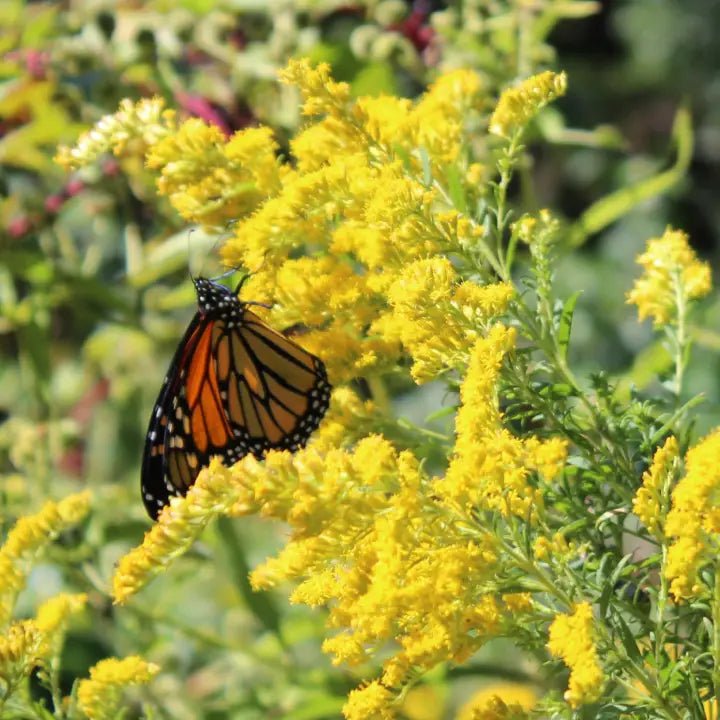
Find Native Plants by Zip Code
We took the guesswork out of planting native. Check your zip to see what ships!
